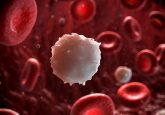A novel biomarker for glioma: a powerful new prognostic tool?

A recent study published in the journal EBioMedicine has demonstrated that a potential biomarker, SHOX2, may help researchers to predict the survival outcome of patients with diffuse glioma brain tumors. These findings could aid the development of new therapeutic targets and allow clinicians to determine more effectively the best treatment plan for individual patients.
Predicating the survival of patients with lower-grade gliomas (LGGs), grades II and III, has so far proven difficult due to their highly variable clinical course. This variability has spurred many studies to find a potential prognostic biomarker that could permit effective prediction of survival outcome.
In this new study, researchers from the University of Texas Southwestern Medical Center (TX, USA) examined genome-wide datasets from previous studies to assess the expression or methylation of the SHOX2 gene. Patients who exhibited higher levels of SHOX2 expression and methylation demonstrated a significantly poorer survival outcome than those with lower levels, suggesting that SHOX2 may be a valuable prognostic biomarker for LGG patients.
Adi Gazdar, who is one of the researchers on the study and also a member of the Simmons Cancer Center at UT Southwestern, suggests that SHOX2 may be our most powerful prognostic biomarker for LGG to date: “As an independent biomarker, SHOX2 expression is as potent as the currently best and widely used marker known as IDH mutations.”
After discovering SHOX2’s uses as a powerful independent prognostic biomarker for LGG, researchers then went on to assess whether SHOX2 could work in combination with other biomarkers for LGG, such as IDH. They found that SHOX2 was able to identify subsets of LGG patients with better survival outcomes, even when independent biomarkers had predicted a worse prognosis.
These findings suggest that SHOX2 could have powerful prognostic value for LGG, both independently and when used in combination with other biomarkers. Additionally, measuring the expression and methylation levels of SHOX2 may facilitate distinction between different prognostic patient subgroups and allow clinicians to identify the most effective therapy depending on the individual patient.
Gazdar commented: “Our findings are based on analysis of previously published studies. They will have to be confirmed in prospective studies, and their clinical contribution and method of use remain to be determined.”
As Gazdar mentions, the next step will be to confirm these significant findings in further studies. Not only could this powerful prognostic biomarker allow clinicians to develop personalized treatment plans for LGG patients, it could also help in the future discovery of novel therapeutic targets.
Sources: Zhang Y, Zhou Y, Luo X et al. SHOX2 is a potent independent biomarker to predict survival of WHO grade II–III diffuse gliomas. EBioMedicine 30, 80-89 (2016); http://www.utsouthwestern.edu/newsroom/news-releases/year-2016/dec/glioma-biomarker-gazdar.html
Also featured on our sister site, Neurology Central.




